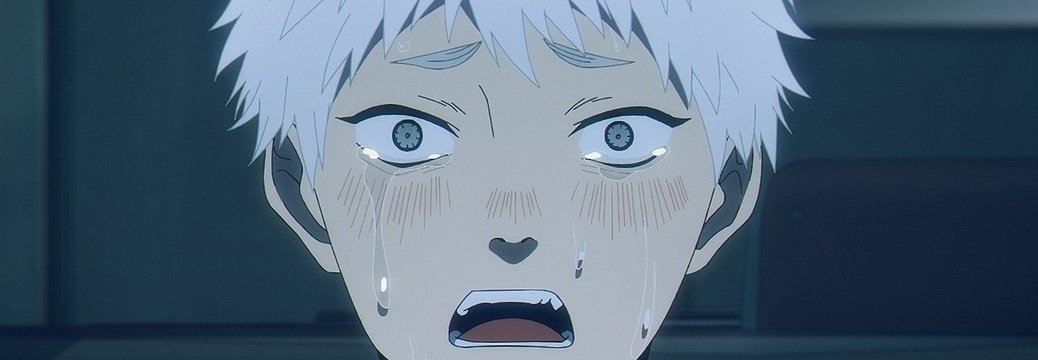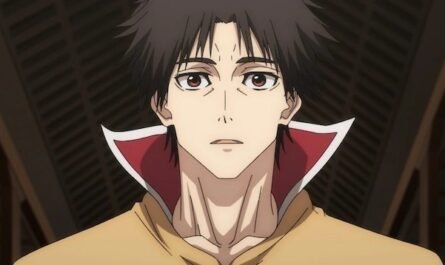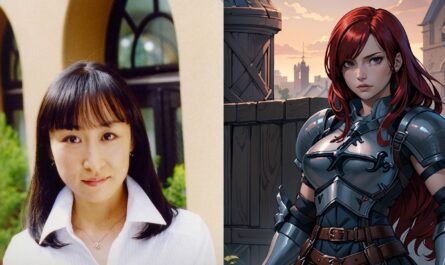“The Summer When Light Died” is a coming-of-age horror anime (broadcast every Saturday night from 0:55-1:25 and on Nippon TV/ABEMA) that depicts the strange events that Yoshiki, a high school boy living in the countryside, encounters while spending time with his best friend, “Nika,” who imitates Hikaru, as well as the thoughts and conflicts that each of them faces.
The story is finally approaching its climax, and excitement among viewers is building, especially on social media. This time, a special conversation has been held between Mokumoku Lento, who wrote the original story, and TOOBOE, who is responsible for the ending theme song. In two parts, we will deliver must-read production anecdotes for fans of this work, as well as the passion and dedication that went into the work.
I wanted to push the line toward discomfort early on in the story. What impression did you have when you first came across “The Summer the Light Died”? TOOBOE: I read the manga when it became a hot topic on social media, and this is just my interpretation, but it really showed the kind of sensitive aspects, or fetishism, that I like. I enjoy stories set in small communities, so it really resonated with me. What do you mean by sensitive parts? TOOBOE: It’s on the cover of my CD, but there’s a scene where Hikaru shows the monstrous side of himself. I love the feeling that he’s seeing something he shouldn’t see. Mokumokuren: readers are more sensitive to that scene than I thought.
They interpret it in all sorts of ways, thinking it might be this kind of scene or that kind of scene. Surprisingly, there are some parts that I didn’t think about too deeply (laughs). TOOBOE: I even thought, “Maybe he started drawing that scene because he wanted to.”
Mokumoku Ren: Rather than drawing it out of fetishism, I wanted to depict something that would be unpleasant and unacceptable to many people. I tried to cross that line of discomfort in volume 1. It’s fine if people find it disgusting or sexy. Many expressions could only be created in anime, but which scene was particularly memorable? Mokumoku Ren: Early in production, I suggested to the director that we use a choir, and he expanded on it considerably. Using sound and voices is something that can only be done in anime, so it was great.
There’s no choir scene in the original work, so I think readers who wondered where the practice scene was connected to finally understood, “Oh, so that’s where it leads.” TOOBOE: For me, it was the ending of episode 3. The ending theme song is played in full, but I later heard from the director that it wasn’t originally planned that way; when he heard the song, he really liked the full version, so he used it. My song gave birth to an idea for the anime, and then we thought, “If that’s what you want, we should do it this way too,” and I believe that the synergy between our ideas led to the ending of episode 3.
A song that was created without taking it lightly, knowing that people would say, “This isn’t it.” When TOOBOE was asked to write the ending theme song, did the anime production side have any specific requests? TOOBOE: There weren’t any at the stage of making the demo tape. The first thing I did was reread the original manga and extract various elements from it.
This work has elements of “summer” and “youth ensemble drama,” as well as “horror” and “suspense.” I was surprised at how well everything came together. Initially, I categorized the songs as horror-like, summer-like, and youth-like, but after discussing with the label, we decided to combine them all into one category. That song is “You Are a Monster.” When did you first hear the song ‘Mokumoku Ren’? Mokumoku Ren: He made about four demo songs, so that was the first time I heard them. I discussed which song to use with the director, and we were on the same page, so this one was the best. Many anime series have sad endings, so I chose these without much hesitation because they really amplified that sadness.
However, all the songs were excellent, so I listened to the demos constantly while working on the album. Can you tell me why you chose all the titles in hiragana? TOOBOE: This is my own interpretation, but the supernatural power inside Hikaru has something childlike, something immature, like he doesn’t fully understand humans. If the title were in kanji, it would convey the impression of an adult making a definitive statement, but in hiragana, it seems like he’s questioning it, yet also assertive. Ambiguity is the charm of hiragana. Mokumoku Ren: Did TOOBOE come up with the English title, “You are my monster”? TOOBOE: Yes.
This is just a gimmick, and I wanted to make it feel a little childish, like a slight parody of the children’s picture book “Are You My Monster?” from overseas. Since people overseas can also experience anime culture, I wanted to add a gimmick rather than just saying “You are the monster.” Mokumokuren: Oh, I see.
This work has a significant international readership, which is excellent. That’s a great story. By the way, do you read YouTube comments, TOOBOE? TOOBOE: I don’t because they’re scary. However, I hear about the reviews as my staff collects them. Mokumokuren: If you look at the comments section of YouTube videos related to “The Summer When the Light Died,” the comment section for “You Are a Monster” is the kindest. It’s filled with sensitive and kind people, and I could sense the atmosphere of TOOBOE’s fan base.
There were so many comments that were sensitive and supportive of Yoshiki, and it really helped me. –Fans of the original work have also commented that “this song really understands the work” and “it really hit home.” TOOBOE: I see. This may sound harsh, but I never take tie-ups lightly. The most important thing is that the original work and anime become popular, and promoting my name or making it a hit is secondary. I’ll be happy if it ends up being a hit, and I wrote the song so that people can enjoy it even if they’re not familiar with the anime. Ultimately, I want people who watch the anime to enjoy it.
This is the only egosearch I’ve done, but before the anime started airing, I searched for “Theme song for ‘The Summer the Light Died'” and found zero people who wanted TOOBOE to do it. There really were zero people. Mokumokuren: Whaaat!TOOBOE: When it was released, the first thing people would ask was, “Who is this guy?” and I made it with the assumption that people would say, “That can’t be him,” so I didn’t take it lightly. The songs I’ve created up until now have been mostly clunky pop songs, and some people may not associate me with the music I’ve made this time around. Ultimately, my goal was for people to believe, “I’m glad this artist is the one I chose.” I’m glad I’ve received comments like the ones I mentioned earlier.
The ending animation is a unique creation that incorporates live-action footage. What were your impressions when you first saw it? TOOBOE: It was made even more elaborately than I expected, which made me really happy. I think the live-action footage was probably shot on location as well. Setting the season as “winter” was something I hadn’t intended, so it feels like they went one step further. Mokumokuren: I saw the footage shot on location first, and a staff member sat in Yoshiki and Hikaru’s positions. When I saw the animated footage, I was impressed, thinking, “Wow, that footage turned out like this!” The animation also contains some remnants of the staff’s movements, which I really liked, adding a vivid touch to Hikari’s life. Hikari is portrayed as a very realistic and vivid character, and I really imagined him as an ordinary boy you’d find anywhere. It’s also impressive when Yoshiki and Hikaru hum the “goodbye” part in the chorus. TOOBOE: That was a surprise. It was so good, we even incorporated it into our music video. “Goodbye” is a familiar word in pop music, so we started with the “goodbye” part in the chorus. I was also happy that the part I wanted to capture people’s hearts with was also expressed in the video.
Interview and text by Hokari Rie (Studio Eclair) *Part 2 will be released on Friday, September 26th at 6:00 PM. Mokumokuren manga artist. Made her commercial serial debut with “The Summer Hikari Died.” The vivid worldview, where youth and horror intersect, has garnered attention, especially on social media. Less than a year after its serialization began, the work won first place in the “This Manga is Amazing! 2023” (Takarajimasha) Men’s Edition and 11th place in the “Manga Taisho 2023” Awards. It has been adapted into a novel, anime, stage play, and various other media mixes. TOOBOE: TOOBOE is a solo project by music creator JohnJohn, engaged in a variety of creative activities, including lyrics, composition, arrangement, singing, illustration, and video production. With his distinctive voice and catchy, addictive songs, TOOBOE is a multi-talented artist who transcends the boundaries of modern music’s internet scene and J-Pop. He made his major debut in April 2022 with his first single, “Shinzou.” His November 2022 release, “Yakuyaku,” was used as the ending theme for episode 4 of the TV anime “Chainsaw Man.” Furthermore, the music video for “Itai, Itai, Flee,” released in June 2024, became a hot topic around the world, surpassing the views of “Kinshin” and “Yaku (Tablets),” which have already surpassed 20 million views each, and became the fastest music video to reach 20 million views on YouTube.











